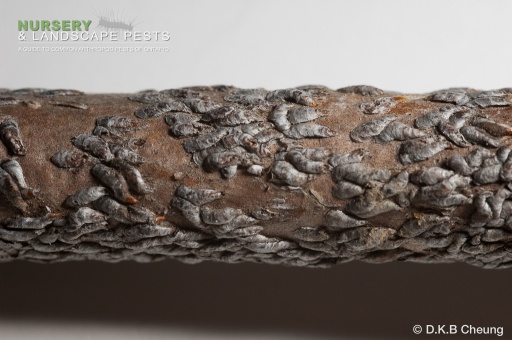Valuable hedges in jeopardy in Calgary this year
Mild temperatures are promoting spread of terrible hedge pest.
It’s called oystershell scale and its claim to fame is killing off hedges and bushes. Especially cotoneaster, a hardy bush which can endure harsh prairie winters but is very susceptible to this ravenous aphid-like bug.
If the weather was very cold and there was more snow, only a small number of the bugs would survive. Large amounts of rain will also slow it down and Calgary experienced a warm fall as well.
As it stands, last summer’s population will probably multiply in devastating numbers, especially in some of Calgary’s older districts like Inglewood. It has also been invading some other communities along the Bow River, such as Riverbend and Douglasdale.
Cotoneasters have a very long lifespan. In addition to being quick-growing and hardy, cotoneasters are beautiful in the fall and with diligent pruning they grow thick so they act as a natural divider or fence in the yard.
Well-pruned hedges and bushes can add value to your home, as good landscaping will do.
Oystershell scale kills plants by sucking the life out of a hedge. Cotoneasters and other bushes can be saved as long as homeowners are vigilant. The City of Calgary last summer has been treating cotoneasters and other bushes in public areas, but cotoneasters on private property is a problem to be dealt with by homeowners. In fact there is a by-law in place outlining the responsibility of homeowners to keep agricultural pests in check.
Often people aren’t aware hedges are affected until they start to die. They can lose a hedge that took 20 to 30 years to grow.

Symptoms of oystershell scale are brown leaves (evident during the growing season) and little bumps and ridges on the branches. When examined closely, you can see that the bumps look like little shells, hence its name. The shells are waxy structures which protect the vampire-like insects within.
How to get rid of it
It is completely treatable with special insecticides that come in soap form or in oil. It takes several doses to kill the near microscopic bugs. If the hedge is badly infected, you’ll have to capice the hedge (cut down to the ground) and treat the stumps to prevent young insects remaining along the root base to crawl up new growth. This time of year, scale should be treated before the hedges begin to bud. Many people are averse to using chemicals and insecticides in their yard, perhaps because they are growing organically or would rather use natural methods for controlling insects, such as natural predators. . They can offer some degree of control but are difficult to introduce. These natural enemies include Lady Bugs, parasitic wasps and certain species of mites. Canola oil may be used but only during certain times of the growing cycle or it will suffocate the plant as well. It’s best to consult with an arborist if you need help in your fight with oystershell scale.
It’s not just the sturdy cotoneaster that can be affected. Scale can hit 120 different types of plants, including precious lilac bushes, crabapples and green ash.
Is your hedge dying?
Another reason why cotoneaster hedges and other bushes and trees die is because of Fire Blight. It’s not an insect – but a bacterium. It is also an enemy of rose bushes. Fortunately, it’s not as bad in Calgary presently as oystershell scale.
Fire Flight can be controlled by cutting back the dead and affected branches at least 30 cm away from the affected branches with sterilized shears.
